WiseCleaner Think Tank
Encounter difficult computer problems?
All about maintenance and optimization of your Windows System.
Dec 2, 2022
The refresh rate is one of the parameters that many computer gamers must consider when buying a monitor. Is the higher the refresh rate, the better? How does it relate to panel type and response time?
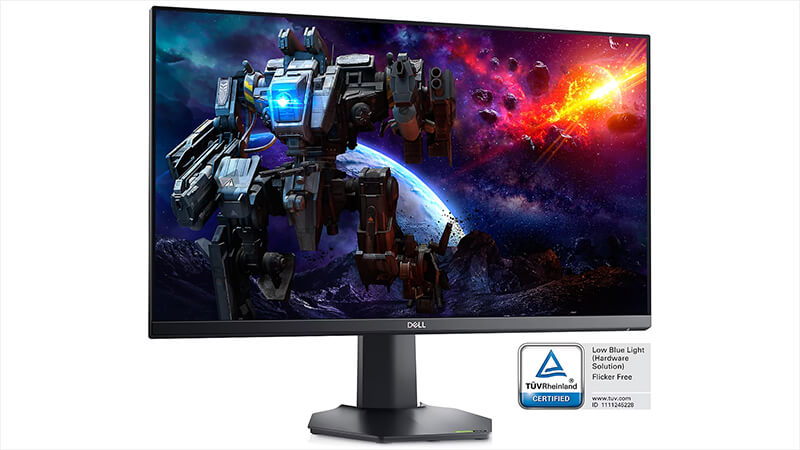 (Image source: dell.com)
(Image source: dell.com)
In simple terms, a monitor's refresh rate is the number of times a monitor is able to draw a new image per second, measured in hertz (Hz). Please click here to know more about the refresh rate.
For example, if the monitor has a refresh rate of 144Hz, it can refresh the image up to 144 times per second. A monitor can only display images as fast as the system can generate images, so if your monitor has a refresh rate of 144Hz but your GPU is only delivering 30 frames per second, then your monitor displays images at 30 frames per second.
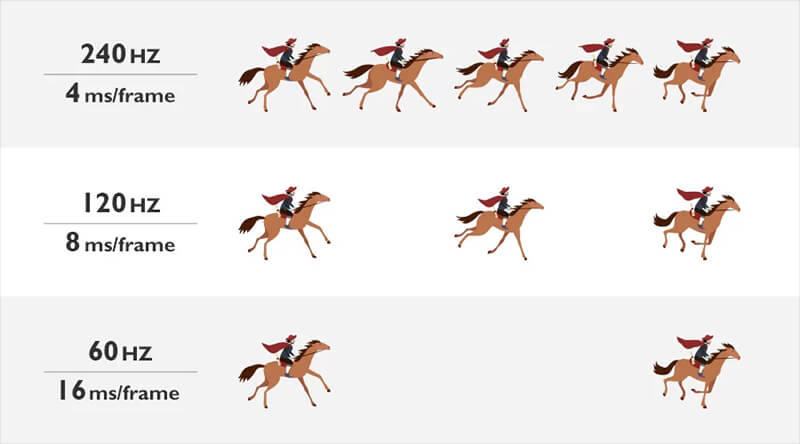 (Image source: benq.com)
(Image source: benq.com)
Pursuing a faster refresh rate is critical for gaming, as it allows the screen to keep up with the player's actions. For example, a common mouse can report its position up to 1000+ times per second, while a modern PC can run competitive FPS games like Counter-Strike or PUBG: Battle Grounds at hundreds of frames per second.
However, once a high refresh rate is reached, other factors such as response time and motion blur become more important when it comes to getting the sharpest image possible.
In simple terms, response time is the time it takes for a pixel to change from one color to another, usually measured in milliseconds (ms). For response time, lower is better.
It's directly related to the refresh rate since a monitor can only refresh its image really quickly if the pixels can respond quickly enough. For example, at a refresh rate of 60Hz, the response time of 16ms is its theoretical maximum.
Most gaming monitors today still use poorer TN panels because of response time constraints. The theoretical response speed of TN panels can reach 1 ms at the fastest, while that of IPS panels is 4 ms or longer. At present, the latest fast IPS can also reach the corresponding speed of 1 ms.
The most intuitive effect of a slower refresh rate or response time is making images look blurry, and there can be a few different reasons why this can happen.
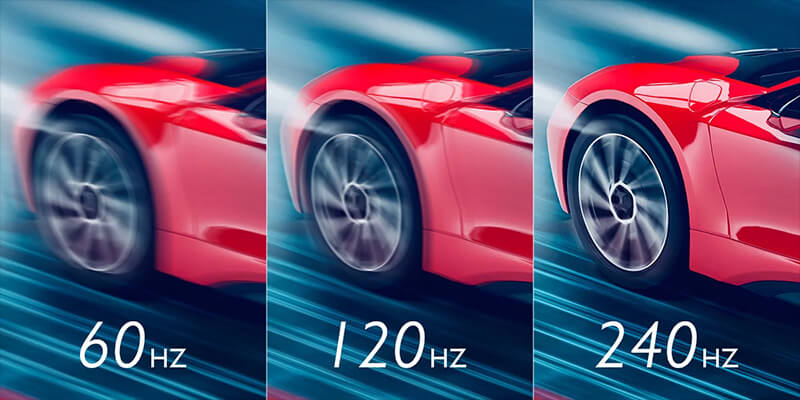 (Image source: benq.com)
(Image source: benq.com)
The first is the response time. Due to the slow response time, it may take a while for the pixel to transition from the previous state to the new state. This results in a ghost behind the new image. The slower the pixel responds, the longer the trail will be and the less sharp the image will be.
Another is to display motion blur, which is caused by the human eye being able to perceive where the image is blurry. Because the human eye will unnaturally track the moving image on the screen, but in fact the image is static, the time is very short, about a few milliseconds, but your eyes will eventually perceive the blurred image as moving.
For the latest Windows 11 and 10 systems, we can check the monitor refresh rate at Windows Settings. The full path is Settings > System > Display > Advanced display.
Please press Win + i to open Settings, then select System -> Display. Scroll to the bottom and click Advanced display. Then you will see the monitor's refresh rate in the "Choose a refresh rate" section.
If you have more than one monitor, just select a monitor in the "Select a display to view or change its settings" section.
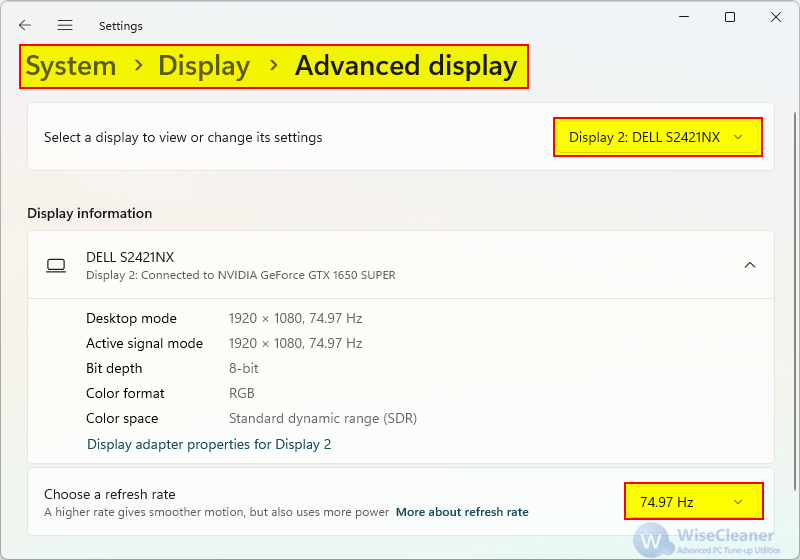
If you are running Windows 7, Windows 8, or Windows 8.1, the full path to view the refresh rate of your monitor is Control Panel > Appearance and Personalization > Display > Screen Resolution.
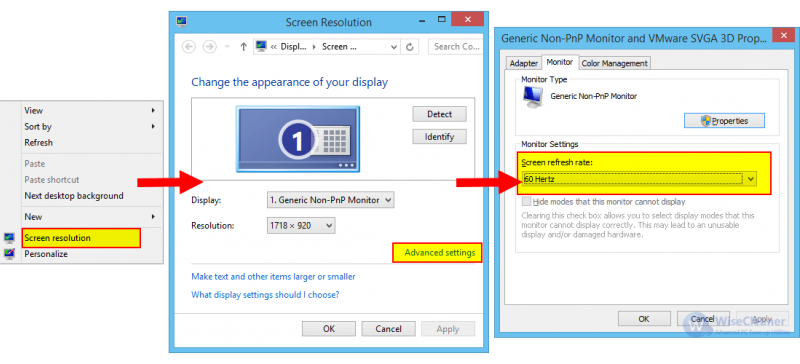
What you must understand is that it is meaningless to blindly pursue a high refresh rate, at least you need your CPU and GPU to achieve better performance before you can consider it.
If you like to play FPS games, you don’t need to consider a monitor with a response time lower than 4ms, and a refresh rate lower than 144Hz. If you don't usually play games, it's best to prioritize visuals over refresh rate and response time when buying a monitor.
wisecleaner uses cookies to improve content and ensure you get the best experience on our website. Continue to browse our website agreeing to our privacy policy.
I Accept